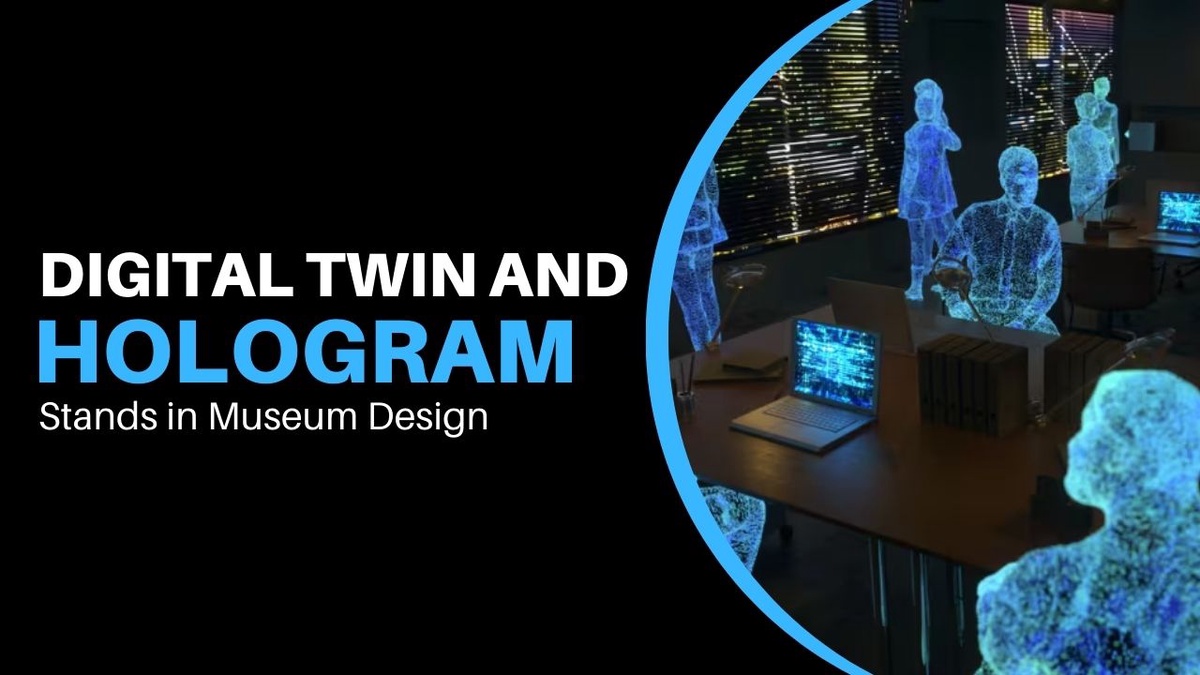In the realm of museum design, the integration of cutting-edge technology has always been a captivating endeavour. From interactive exhibits to immersive experiences, museums constantly seek innovative ways to engage and educate visitors. Compare and choose the most appropriate holographic displays with one of the leading 3D holographic display providers i.e. Vision3D. One such frontier that promises to revolutionize the museum-going experience is the adoption of digital twins modelling and hologram stands.
Features of Digital Twins
Digital twins are virtual representations of physical objects, processes, or systems. They leverage various technologies such as the Internet of Things (IoT), artificial intelligence (AI), and data analytics to create a digital replica of the real-world entity. Here are some key features of digital twins.
- Real-time Monitoring - Digital twins continuously collect data from sensors embedded in the physical object or system, allowing real-time monitoring of its status, behaviour, and performance.
- Data Integration - They integrate data from multiple sources, including IoT sensors, historical records, external databases, and simulations, to provide a comprehensive view of the physical entity.
- Simulation and Predictive Analytics - Digital twins use advanced modelling and simulation techniques, often powered by AI and machine learning algorithms, to simulate the behaviour of the physical entity under different conditions. This enables predictive analytics for forecasting future performance, identifying potential issues, and optimizing operations.
- Remote Control and Management - They facilitate remote control and management of physical assets or systems, allowing operators to interact with and control them virtually from anywhere.
- Lifecycle Management - Digital twins support the entire lifecycle of the physical entity, from design and development to operation, maintenance, and decommissioning. They enable better decision-making at each stage by providing insights and actionable intelligence.
Overall, digital twins offer a powerful platform for digital transformation, enabling organizations to gain deeper insights, improve decision-making, and optimize the performance of physical assets and systems in the digital age.
Understanding Digital Twins
Digital twins, a concept originating from the realm of engineering and manufacturing, involve creating virtual replicas of physical objects or systems. These digital twins are not merely static representations but dynamic simulations that mimic the behaviour and characteristics of their real-world counterparts in real time. Initially used for optimizing performance and predicting maintenance needs in industries like aerospace and automotive, digital twins with a hologram stand are now finding their way into various domains, including cultural institutions.
The Role of Digital Twins in Museum Design
In the context of a digital museum, digital twins offer a multitude of possibilities. They allow curators and designers to create virtual replicas of artifacts, artworks, or even entire exhibitions. These digital representations can be accessed remotely, enabling scholars and enthusiasts from around the world to study and appreciate cultural treasures without physical constraints.
Furthermore, digital twins enhance the preservation efforts of museums by providing detailed documentation of objects in their current state. By capturing high-resolution scans and metadata, institutions can create comprehensive archives that serve as valuable resources for research and conservation purposes.
Envisioning Hologram Stands
While digital twins offer virtual access to physical artifacts, a hologram stand to take immersion to the next level. Imagine stepping into a museum gallery where historical figures come to life through holographic projections. These lifelike representations can narrate stories, provide historical context, or engage visitors in interactive conversations, blurring the lines between past and present.
Hologram stands to offer an innovative approach to storytelling, allowing museums to breathe new life into static displays. By leveraging advancements in augmented reality and projection technology, institutions can create captivating experiences that resonate with audiences of all ages.
The Impact on Visitor Engagement
The integration of digital twins modelling and hologram stands holds immense potential for enhancing visitor engagement. By offering immersive and interactive experiences, museums can attract a broader audience and foster deeper connections with their collections. Whether it's exploring ancient civilizations through virtual reconstructions or interacting with holographic guides, visitors are provided with opportunities to learn, discover, and empathize in ways previously unimaginable.
Moreover, these technological innovations enable museums to adapt to the evolving preferences of digital-native audiences. By incorporating elements of gamification, personalization, and social sharing, institutions can create memorable experiences that resonate long after the visit concludes.
Conclusion
As a digital museum embraces the digital era, the integration of digital twins and holograms emerges as a transformative force in museum design. These technologies not only offer new avenues for storytelling and engagement but also facilitate collaboration, accessibility, and preservation on a global scale. By harnessing the power of virtual replication and immersive projection, museums can transcend physical limitations and enrich the cultural landscape in profound ways. To learn more about holographic products, connect with Vision3D customer care number - 8971953451.


No comments yet